Based on Network Pharmacology to Explore the Action Mechanism of Caulis Sinomenii-Caulis Piperis Kadsurae Herb Pair in the Treatment of Rheumatoid Arthritis
Yuan Li ,Xiu-Juan Hou ,Hai-Yu Wang
1Beijng university of Chinese Medicine,Beijng 100029,China.2Dongfang Hospital Beijng university of Chinese Medicine,Beijng 100078,China.
Abstract Objective: By using the method of network pharmacology to explore the mechanism of action of Caulis Sinomenii-Caulis Piperis Kadsurae herb pair in the treatment of rheumatoid arthritis.Methods:Search and screen the active ingredients and targets of Qingfengteng (Caulis Sinomenii) and Haifengteng (Caulis Piperis Kadsurae)through the TCMSP database,and predict and supplement the target points of the active ingredients through the Swiss Target Prediction platform;collect rheumatoid arthritis disease targets through GeneCards,OMIM database,and DRUGBANK database,construct a Venn diagram,and obtain the key target of Caulis Sinomenii-Caulis Piperis Kadsurae herb pairs in the treatment of rheumatoid arthritis;use Cytoscape 3.7.1 to establish the effect of Caysaceae sylvestris and Rhizoma sibirica in the treatment of rheumatoid arthritis "Drug-active ingredient-target"network diagram,submit key targets to STRING11.0 database to construct a protein interaction network model to obtain core targets;perform the GO and KEGG enrichment analysis of key targets on the Metascape platform,and draw the network diagram of "active pharmaceutical ingredients-targets-pathways".Results:After screening,discover a total of 27 active ingredients of Caulis Sinomenii-Caulis Piperis Kadsurae herb pairs,which can act on 229 targets,1269 related targets for rheumatoid arthritis diseases.And obtain a total of 95 common targets for drug active ingredients and diseases,including PTGS2,EGFR,MMP9,CASP3,JUN,etc.The common targets are mainly enriched in signaling pathways such as Pathways in cancer,Th17 cell differentiation and Endocrine resistance etc.Conclusion:This study preliminarily explored the potential mechanism of Caulis Sinomenii-Caulis Piperis Kadsurae herb pairs in the treatment of rheumatoid arthritis.The Caulis Sinomenii-Caulis Piperis Kadsurae herb pair may regulate cancer-related pathways,Th17 cell differentiation,endocrine resistance and other pathways to treat rheumatoid arthritis by regulating targets such as PTGS2,EGFR,and MMP9,providing clues and ideas for follow-up experimental research.
Key words:Caulis Sinomenii,Caulis Piperis Kadsurae,Network pharmacology,Rheumatoid arthritis,Signaling pathway,Mechanism
Background
Rheumatoid arthritis (RA) is an autoimmune disease with synovitis as the main pathological change.The prevalence of RA in China is 0.19%~ 0.41% [1].With the progression of RA,severe cases can cause joint deformity and loss of motor function,affecting the quality of life of patients.RA belongs to the category of "Bi disease" in traditional Chinese medicine (TCM),which has an exact clinical efficacy in the treatment of RA.Our group based on theoretical exploration combined with clinical practice,summarized that RA disease mechanisms include phlegm stasis Bi obstruction,liver and kidney deficiency,deficiency of Qi and blood [2],which is more common.Phlegm and blood stasis are the pathological products of chronic diseases,and are also the pathogenic factors throughout the development process of the disease.Rattan drugs are often used in clinical practice.Vine medicine is good at climbing and naturally like stretch.It is analogous to human limbs,which can smoothly reach the blood of the limbs and dredge the joints.In“Reading Materia Medica”,so-called “medicines such as vine can dredge meridians,because vine plants wind like a network to spread,interdigitate,and reach everywhere,its shape likes meridians”.“Compendium of Materia Medica” has “wind evil penetrates deep into the bones,like oil into the noodles,and you can't find it without using vines”.The combination of Qingfengteng (Caulis Sinomenii,CS) and Haifengteng(Caulis Piperis Kadsurae,CPK),as a common drug pair in clinic,specifically treats joint soreness and unsmooth of tendons and veins in Bi disease,which can pass through the silt of blood vessels and remove phlegm from the meridians.
Traditional Chinese medicine and compound formulas exert their medicinal effects through multi-component,multi-target and multi pathway,and their mechanism of action is complex.Network pharmacology has the characteristics of holistic and systematic [3],which integrates biology,medicine,bioinformatics and computer to integrate drug action network and biological network to explore the interaction relationship between drug and organism[4],from systems,overall and network perspective and biomolecular level to reveal drug mechanism of action.Thus to provide technical support for the mechanisms of TCM and compound formulas in treating complex diseases,and promote further development of the modernization of TCM compound [5].
In this study,by using a network pharmacology approach,we investigate the potential action mechanism ofCaulis Sinomenii-Caulis Piperis Kadsurae(CS-CPK) herb pair in the treatment of RA,predict its key pathways,components and targets,provide research directions and ideas for the mechanism of CS-CPK herb pair in the treatment of RA,and provide a basis for clinical application.
Materials and methods
Component and target information screening of CS-CPK herb pair
The effective chemical components of CS-CPK herb pair is searched through Traditional Chinese Medicine Database and Analysis Platform [6] (TCMSP,http://tcmspw.com/tcmsp.php). The main active ingredients and their related targets is selected by setting the oral bioavailability ≥ 30 % and active ingredients with druglikeness ≥ 0.18.The active ingredients that were included after screening are searched through the PubChem [7] database(https://pubchem.ncbi.nlm.nih.gov/),to find the corresponding 2D chemical structure in SDF format.Then upload it to Swiss Target Prediction [8](Http://www.swisstargetprediction.ch/) platform to obtain information on the potential targets of CS-CPK herb pair active ingredients.Ingredients with no predicted targets of action are eliminated.After the screening is completed,the names of the included protein targets are standardized in the Uniprot protein database [9] (https://www.uniprot.org).
Rheumatoid arthritis target screening
Using "rheumatoid arthritis" as the search term,find disease targets of RA in OMIM database(http://www.omim.org),GeneCards database(https://www.genecards.org),DRUGBANK database(https://www.drugbank.ca).In the GeneCards database,a higher score value indicates that the target is more closely related to the disease.If the number of collected targets was excessive,targets with a score value greater than or equal to the median were selected as disease targets for RA.Summarize the disease target information obtained in the above-mentioned database,delete duplicate items,and establish a RA disease target data set.
Constructing a “drug-active ingredient-target”network diagram
Use CytoScape 3.7.1 software to import the collected active ingredient and target information,and draw a network diagram of "drug-active ingredient-target".In order to simplify the drawing,the first letter of the drug’s pinyin is used to represent the drug,and the first letter plus a number representing the active ingredients screened (see Table 1 for details).
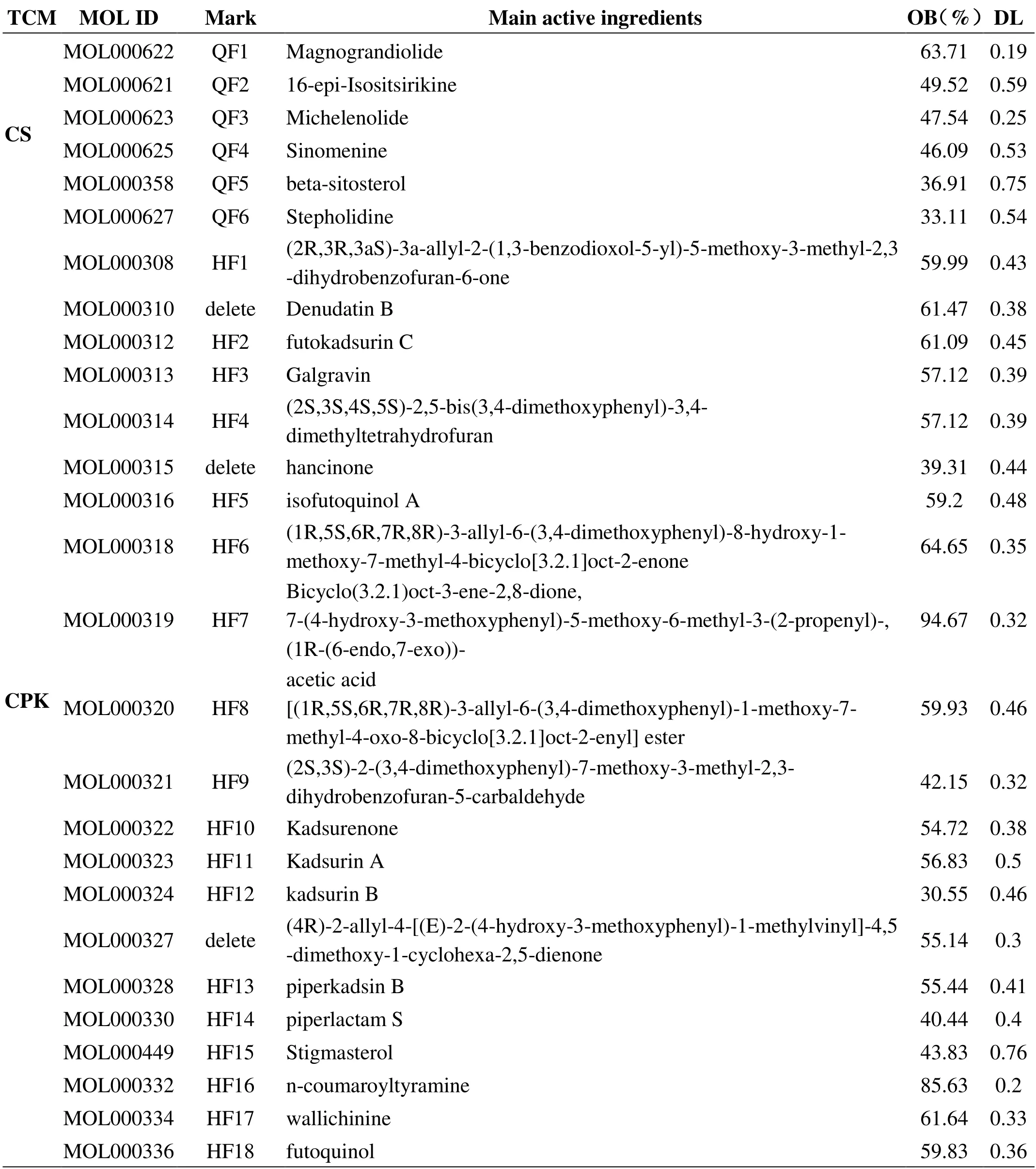
Table 1 The main active components of Caulis Sinomenii-Caulis Piperis Kadsurae
Construction of the protein-protein interaction(PPI) network of CS-CPK herb pair and RA target
Upload the collected drug targets and disease targets to Venny2.1
(https://bioinfogp.cnb.csic.es/tools/venny/index.html),draw a Venn diagram,and take the intersection of drug targets with disease targets.The overlapping common
Import the obtained data into CytoScape 3.7.1 software,distinguish the degree of the connection of each target by setting the node size and color transparency,and select the larger degree value as the core acting target.target may be the key target of CS-CPK herb pair in the treatment of RA.Upload the obtained key targets to the STRING11.0 database [10](https://string-db.org),set the species to humans,set the highest confidence to greater than 0.9,and the rest are the default values to generate PPI network model.
Enrichment of CS-CPK herb pair-RA target function and pathway
Introduce the key targets of CS-CPK herb pair in the treatment of RA into the Metascape online platform[11] (http://metascape.org),set P to be less than 0.01,and perform GO analysis,including cellular component (CC),molecular function (MF),biological process (BP),and perform KEGG enrichment analysis,save the data results,and upload them to the bioinformatics platform(http://www.bioinformatics.com.cn),draw advanced bubble charts,and visualize the results.
The network diagram construction of action components of CS-CPK-key targets-pathway
Using the CytoScape 3.7.1 software,draw the network diagram construction of action components of CS-CPK herb pair-key targets-pathway.Using CytoScape 3.7.1 built-in tools to analyze the degree,betweenness and closenesss of each component and key target,and judge important targets and key active ingredients according to the degree.
Results
Active component and target information screening of CS-CPK
Preliminary extraction of 16 chemical components of CS and 31 chemical components of CPK.After screening by ADME,6 active components of CS and 21 active components of CPK were obtained,including Kadsurenone,Stigmasterol,Futoquinol,Sinomenine,etc.,see Table 1.Set the Probability value of the Swiss Target Prediction database to be greater than 0.11,and the predicted targets are added to the drug target information.After supplementation,a total of 218 component targets for CS and 468 component targets for CPK are obtained.After delete the duplicates,229 drug targets are obtained.Eliminate 3 kinds of ingredients that are not predicted to target after supplementation,namely Denudatin B,Hancinone,(4R)-2-allyl-4-[(E)-2-(4-hydroxy-3-methoxyphenyl)-1-methylvinyl]-4,5-dimethoxy-1-cyclohexa-2,5-dienone.
Establishment of “drug active ingredient target”network
Using Cytoscape 3.7.1 software,draw the "drug-active ingredient-target" network (Figure 1).Among them,the circular nodes of different colors represent drugs,the hexagonal nodes are the components,the diamonds are the targets.The corresponding components of each node (Table 1).The size of the node area and the color transparency represent its degree value,the larger the degree value,the larger the node area,and the more opaque the color,the more important the node is.
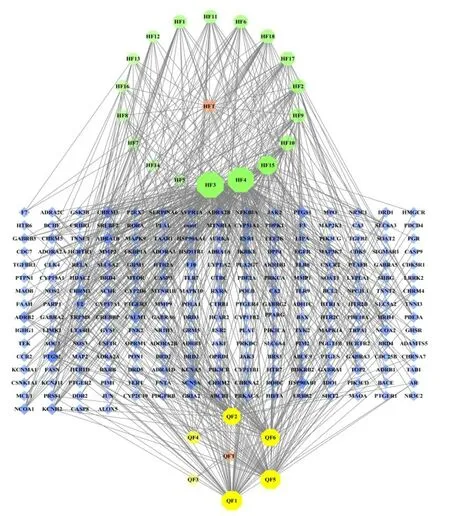
Figure 1 Network diagram of "drug-active ingredient-target"
Acquisition of RA targets
A total of 4465 RA targets were obtained from the Genecards database,and the disease targets were sorted from high to low by Relevance Score.The maximum Score is 110.06 and the minimum is 0.15.According to experience,the targets with a Score greater than the median are screened twice,finally 1089 target spots were finally obtained.Combined with the DRUGBANK and OMIM database to supplement RA targets,after combined with deduplication,a total of 1269 disease targets are obtained.
The construction of the PPI network of CS-CPK herb pair-the key target of RA
Intersecting the selected drug targets and disease targets in Venny2.1,a total of 95 common targets are obtained,and the Venn diagram is drawn (Figure 2).Upload 95 common targets on the STRING11.0 platform,hide 2 unconnected nodes (CA3,RORC),set the confidence level >0.4,import the obtained data into the Cytoscape 3.7.1 software,and draw the PPI network diagram of the key targets (figure 3).The larger the node,the lower the transparency,and the denser the connection,the higher the degree of the node.The top 5 targets of the node degree are PTGS2,EGFR,MMP9,CASP3,JUN,and the corresponding degree are 46,43,41,40,and 38,respectively.It is suggested that these targets may be the core targets of CS-CPK herb pair for the treatment of RA.
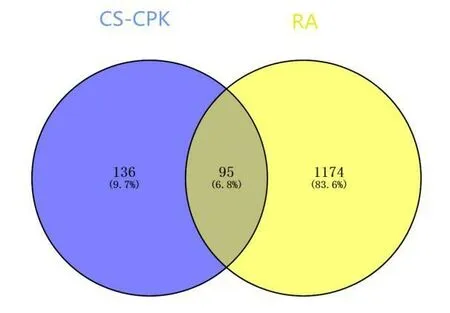
Figure 2 Venn diagram of drug components and disease targets

Figure 3 PPI network diagram of drug components and disease targets
The enrichment analysis of target GO function and KEGG pathway
Through the Metascape platform,the signal pathway analysis of CS-CPK herb pair in the treatment of RA related targets is carried out.And after sorting by the P value,the results are visualized through the bioinformatics platform(http://www.bioinformatics.com.cn/),transforming it into a bubble chart (Figure 4,Figure 5,Figure 6 and Figure 7).GO enrichment analysis results show that the cell composition (GO-CC) is mainly enriched in membrane raft,integral component of synaptic membrane,organelle outer membrane,etc.(Figure 4).The MF of related targets acting on RA are mainly enriched in heme binding,protein kinase activity,nuclear receptor activity,etc.(Figure 5).The BP mainly focuses on blood circulation,regulation of cytokine production,cellular response to nitrogen compound,etc.(Figure 6).KEGG enrichment analysis showed that 20 pathways including Pathways in cancer,Th17 cell differentiation,and Endocrine resistance may be related to the treatment of RA(Figure 7).

Figure 4 GO-CC analysis bubble chart of key targets
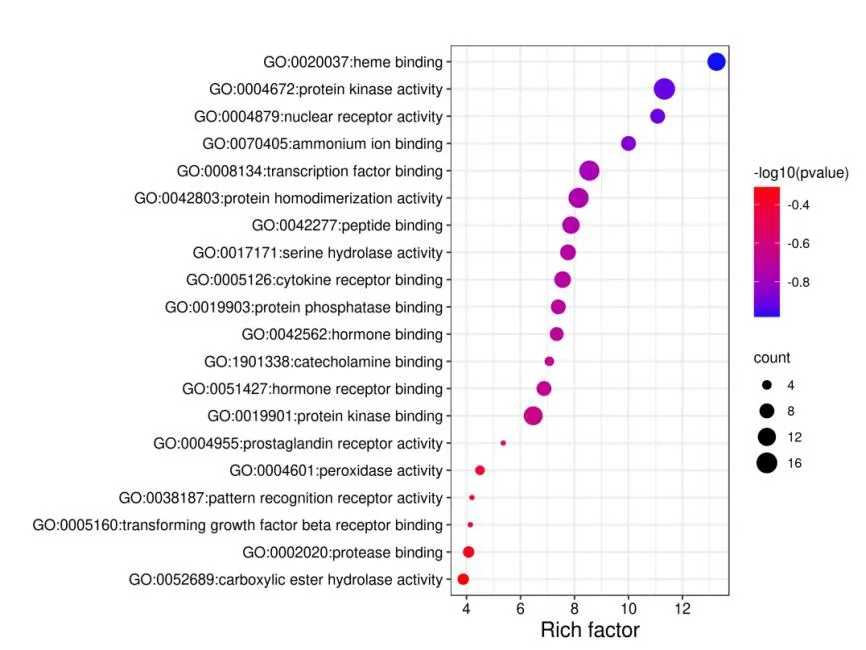
Figure 5 GO-MF analysis bubble diagram of key targets
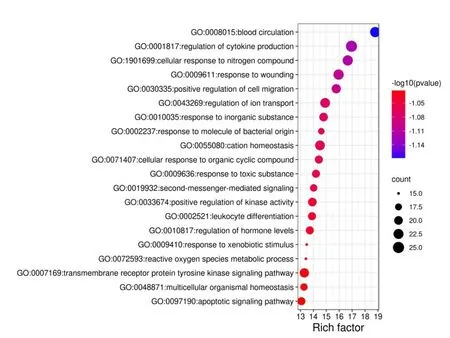
Figure 6 GO-BP analysis bubble chart of key targets
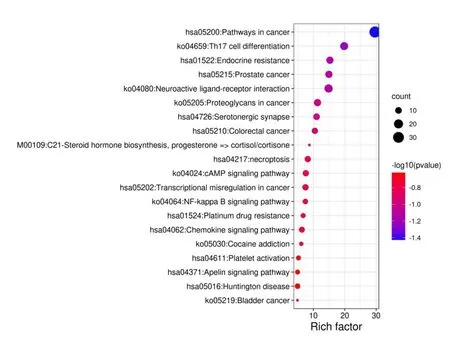
Figure 7 Bubble chart of enrichment analysis of key target KEGG pathway
Network diagram of “active ingredient-target-pathway”
Import key targets,pathway information and other data into CytoScape 3.7.1 software,and draw a network diagram of “active pharmaceutical composition-target-pathway” (Figure 8),the blue diamond node represents the key target,the green inverted triangle node represents the pathway,and the round nodes represent the active ingredients of the medicine (Table 1).The color transparency of the node and the size of the area represent its degree value.The darker the color of the node and the larger the area,the more important the node is.Through CytoScape3.7.1 built-in NetworkAnalyzer to analyze the network topology parameters of CS-CPK herb pair in the treatment of RA,to obtain the core components and active target.

Figure 8 The network diagram of “Drug active component-Targets-Pathways”
The core components are gotten from cytoscape network analysis (Table 2).Among them,the degree of Galgravin is 33,the betweenness centrality is 0.12,and the closeness centrality is 0.44,and the Galgravin is predicted to be the main component of CS-CPK herb pair in the treatment of RA,followed by(2S,3S,4S,5S)-2,5-bis(3,4-dimethoxyphenyl)-3,4-dimet hyltetrahydrofuran (degree is 30,betweenness centrality is 0.09,closeness centrality is 0.43),Magnograndiolide (degree is 30,betweenness centrality is 0.23,closeness centrality is 0.44),beta-sitosterol (degree is 27,betweenness centrality is 0.11,closeness centrality is 0.43).
Among the core targets of the active component(Table 3),PTGS2 has a degree of 26,a betweenness centrality of 0.18,and a closeness centrality of 0.52,predicting PTGS2 is the core targets of CS-CPK herb pair in the treatment of RA,PTGS1,ADRB2,CHRM3,RXRA,and F2 are also relatively important targets.

Table 2 Network node characteristic parameters of main active component

Table 3 The characteristic parameters of the network node of the component target of Caulis Sinomenii-Caulis Piperis Kadsurae herb pair
Discussion
CS-CPK herb pair is a classic combination of dispelling wind,removing dampness,dredging collaterals and relieving pain,and is a commonly used medicine pair for the treatment of RA.CS tastes bitter and pungent,and has a neutral in nature.Its functions are used to dispel rheumatism,ease urination,and clear the meridians.It is clinically used to treat rheumatism,joint swelling,crane knee wind,edema,beriberi,etc.CPK has a pungent and bitter taste,neutral in nature,good at dispelling rheumatism,clearing the meridians and regulating qi,and is suitable for rheumatic arthralgia,joint aches,tendons and veins cramps.Studies have shown that CS has clear anti-inflammatory,analgesic,anti-tumor,and immunosuppressive effects [12],and CPK has clear inhibition of platelet activating factor,anti-inflammatory and analgesic,and protection of ischemic tissues,anti-oxidant and antitumor effects[13],the two drugs are widely used in the clinical treatment of RA.The RCT clinical trials of TCM compound intervention in RA often include CS-CPK herb pair to dredging collaterals and relieving pain.
Zhang Panke et al.[14] intervened RA patients with Xiaohuoluo Dan combined with Guizhi (Cassia Twig)Shaoyao (Peony) Zhimu (Rhizoma Anemarrhenae)Decoction plus 15 g CS and 20 g CPK,which can significantly improve the curative effect and reduce serum proinflammatory cytokines levels.Su Wei et al.[15] treated RA patients with Tenglong Decoction and Taohong Siwu Decoction (the group contains CS and CPK herb pair) combined with leflunomide.The control group was treated with leflunomide.After 3 months of intervention,the improvement of symptoms and laboratory indicators in the treatment group was significantly better than those of the control group.Jia Shuli et al.[16] treated 68 patients with RA with Wuteng Qushi Decoction.The 68 patients in the control group were treated with conventional Western medicine.After 6 months of intervention,the efficacy,ESR and CRP of the observation group were better than those of the control group.Zhao Guifang et al.[17] observed 90 patients with RA and randomly divided them into the control group to be treated with leflunomide.The observation group was given Tenglong Decoction and Taohong Siwu Decoction on the basis of the treatment of the control group.After treatment,the stiffness time,VAS pain score,and joint swelling index of the observation group were significantly better than those of the control group.Ren Xuanxuan [18] randomly divided 90 patients with RA into two groups.The treatment group was treated with rheumatoid I prescription (the formula included 30 g CS and 60 g CPK) combined with Tripterygium Glycoside tablets,and the control group was treated with Tripterygium Glycoside tablets.It is considered that rheumatoid I prescription has obvious curative effect,can significantly improve clinical symptoms and reduce laboratory indexes.However,at present,there is still insufficient experimental research on the mechanism of CS-CPK herb pair in the treatment of RA.In order to preliminarily explore its potential mechanism,we use the method of network pharmacology.
The important active ingredients of CS-CPK herb pair for intervention in RA
In this study,we screened out the important active component of CS-CPK herb pair for the treatment of RA through network pharmacology methods,including Galgravin,(2S,3S,4S,5S)-2,5-bis(3,4-dimethoxyphenyl)-3,4-dimethyltetrahydrofuran,Magnograndiolide,beta-sitosterol,stigmasterol and the like.Guo Yuqi et al.[19] found that the compound Galgravin can inhibit monocyte proliferation and interferon production,and regulate the immune system;Asai et al.[20] proposed that Gailgravin could inhibit the formation of osteoclasts;Filho [21] et al.found that Gailgravin played a certain role in anti-inflammatory test through animal experiments.β-Sitosterol has a variety of biological activities,including anti-inflammatory,analgesic,antibacterial,antitumor,regulating immune system and bone metabolic balance [22].Liu et al.[23] found that β-sitosterol can induce an increase in the release of IL-10 in serum and reduce the increase in capillary permeability of mice induced by histamine,thereby significantly reducing local inflammation.Stigmasterol has antioxidant,anti-inflammatory,anti-tumor,cholesterol lowering and other biological activities[24].Gabay et al.[25] proposed that stigmasterol can bind to chondrocyte membrane and has potential anti osteoarthritis properties.At present,there is no relevant study on the effect of(2S,3S,4S,5S)-2,5-bis(3,4-dimethoxyphenyl)-3,4-dimet hyltetrahydrofuran and Magnograndiolide on RA,which needs to be further verified.
The main target of CS-CPK herb pair for intervention in RA
According to the results of PPI network analysis,the key targets of CS CPK on RA may be PTGS2,EGFR,MMP9,CASP3 and JUN.PTGS2,also known as human prostaglandin endoepoxide synthase-2,is an essential rate-limiting enzyme in prostaglandin synthesis and an important regulatory target for RA inflammatory response [26].Wei et al.[27] proposed that down-regulation of PTGS2 gene expression can inhibit the proliferation and inflammatory response of RA fibroid synovial cells.
EGFR is epidermal growth factor receptor.Jiang Yi et al.[28] found that EGFR protein expression and mRNA levels in the synovium and cartilage tissue of rat in the CIA model group were significantly higher than those in the normal group,and proposed that EGFR was involved in the pathological process of CIA.EGFR can be expressed in synovial cells and is related to synovial hyperplasia and disease progression of RA.EGFR and its ligands can induce synovial fibroblasts to produce cytokines during the pathogenesis of RA.Yuan et al.[29] proposed that the pharmacological regulation of EGFR or its ligands may bring new treatment methods for RA.
MMP9 belongs to matrix metalloproteinases.Matrix metalloproteinases can cause bone destruction in joint diseases,directly degrade cartilage and bone,and can stimulate endothelial cells to regenerate blood vessels to form pannus [30,31].Xia Yukun [32] established a CIA rat model,set up a normal group and a model group,and used ELISA to detect the content of MMP9 in the serum of each group of rats,and found that the content of serum MMP9 in the CIA model group was significantly higher than that of the normal group.After the intervention of Tripterygium wilfordii polyglycosides,the level of serum MMP9 in rats was significantly lower than that of the model group.Studies have shown that [33] the level of MMP9 in the synovial fluid of RA patients is elevated,and knocking out the MMP9 gene can prevent the progression of arthritis in CIA mice.
CASP3 gene encodes Caspase-3 protein.Caspase-3 is involved in the pathway of cell pyrolysis [34].Apoptosis and pyrolysis are different ways of programmed necrosis of synovial fibroblast-like cells.Autoimmune diseases such as RA are related to cell pyrolysis.Studies have shown that [35] methotrexate can increase the expression of caspase-3 in synovial cells of CIA model rats,induce the activation of Caspase-3 in synovial cells,promote synovial cell apoptosis,reduce synovial thickening,and play a therapeutic effect.In vitro cell test studies [36] indicate that resveratrol (Res) inhibits the proliferation of RA synovial cells and induces apoptosis in vitro,which is related to the activation of caspase-3.
Jun is a member of the transcription factor AP-1 family.RA is a chronic inflammatory and destructive joint disease characterized by overexpression of pro-inflammatory/ pro-destructive mediators,whose expression is usually dependent on AP-1 [37].Hannemann et al.[37] proposed that JUN can promote the arthritic response by regulating the expression of cyclooxygenase-2 and arginase-1 in macrophages.Therefore,it is speculated that the CS-CPK herb pair may act on RA through PTGS2,EGFR,MMP9,CASP3 and Jun targets.
Analysis of the GO enrichment analysis of CS-CPK herb pair on interventing RA
The GO analysis results showed that the GO enrichment analysis results of CS-CPK showed that the cell composition (GO-CC) was mainly enriched in membrane rafts,synaptic membranes,and outer membranes of organelles.The molecular functions of key targets acting on RA (GO-MF) are mainly concentrated in heme binding,protein kinase activity and nuclear receptor activity.The heme metabolism pathway plays an important role in the physiological and pathological processes such as apoptosis and inflammation.Heme oxygenase (HO) has also been found to have powerful anti-inflammatory and antioxidant properties [39].Protein kinase is a kind of phosphotransferase that can phosphorylate proteins to perform biological functions.A variety of protein kinases such as mitogen activated protein kinase(MAPK) and P38 mitogen activated protein kinase play an important role in the pathogenesis of RA.
Nuclear receptors (NRs) play an important role in the formation of RA inflammation.Saini et al.[40]found that the NRs activity that stimulates anti-inflammatory and pro-inflammatory programs changes with different stages of RA disease development,and targeted treatment of collagen induced arthritis with ligands synthesized by NRs can significantly alleviate the disease progression.The biological process (GO-BP) mainly focuses on the regulation of blood circulation and cytokine production.Many previous studies have found that there is excessive activation of platelets in the pathogenesis of RA.The specific mechanism has not been elucidated.Excessive activation of platelets can lead to an increased risk of thrombosis and poor blood circulation.Cytokines are closely related to the pathogenesis of RA and play a key role in many immune processes of RA.At present,a variety of cytokine-specific biological agents have been approved for clinical treatment of RA,such as TNF-α,IL-6,etc.The regulation of cytokines is an important research direction in the development of new treatments for RA.
The main related signal pathways of CS-CPK on intervention of RA
The results of KEGG pathway enrichment show that the CS-CPK herb pair on treatment of RA is mainly enriched in pathways in cancer,Th17 cell differentiation and Endocrine resistance et al.RA is characterized by synovial tissue proliferation,increased number of synovial fibroblasts,and showing cancer-like characteristics,including anchorage-independent growth and proliferation,oncogene expression,and lack of contact inhibition[41].PI3K/Akt/mTOR signaling pathway is a common tumor signaling pathway.Studies have shown [42] that PI3K signaling can target RA and psoriatic arthritis.The results of studies on PI3K signaling inhibitors show that PI3K signal small molecule inhibitor may be the future treatment of immune-mediated arthritis.P38 mitogen-activated protein kinase MAPK signaling pathway is one of the tumor signaling pathways [43],and the MAPK signaling pathway is also an important pathway for the treatment of RA [44].In recent years,the commonality between RA and cancer has been paid more and more attention,and both methotrexate and rituximab have been clinically approved for the treatment of cancer and RA [45].
Th17 cells can produce IL-17,IL-21,IL-22 and other cytokines,and Th17 cell subsets play an important role in the pathogenesis of RA [46].The ratio of Th17 cells and Th17/Treg ratio in peripheral blood T cells of RA patients increased [47].Th17 cells and the IL-17 secreted by them play an important role in the joint synovial damage of RA.Inhibiting the expression of Th17 cells can be an effective strategy to prevent and treat RA [48].Zheng et al.[49] proposed that tumor necrosis factor (TNF) can promote Th17 cell differentiation to produce IL-17,and anti-TNF therapy is effective for RA patients by inhibiting IL-17.Experimental studies have shown that the intervention of methotrexate in RA can also down-regulate the level of Th17 cells and inhibit the secretion of IL-17 in the body [50].
There are many physiological and pathological processes related to autoimmune and endocrine disorders in the pathogenesis of RA.In recent years,the neuro-endocrine-immune pathway has attracted extensive attention in the pathogenesis of RA [51],in which the feedback loop of the immune system-hypothalamus-pituitary-adrenal glands (HPA)plays an important role in the pathogenesis of RA [52].Corticosteroids synthesized by adrenal glands and their analogues such as prednisolone can effectively reduce the inflammatory parameters of RA and are often used to treat RA [53].However,clinically,about 30% of RA patients do not respond to steroid treatment and show glucocorticoid resistance.Silverman et al.[54] believe that glucocorticoid resistance may be a contributing factor to the occurrence and development of autoimmune diseases.Further elucidation of the mechanism of glucocorticoid resistance will reveal new targets for the treatment of RA.
Summary
The CS-CPK herb pair is widely used in the clinical treatment of RA.The two herbs are a classic combination of dispelling wind,removing dampness,dredging collaterals and relieving pain.However,there is still a lack of clinical and experimental researchs on the pharmacological mechanism of CS-CPK herb pair for the treatment of RA.Therefore,this study uses network pharmacology to conduct a preliminary study on its pharmacological mechanism.In the later period,animal or cell experiments will be designed on the basis of this research to determine the key targets and pathways of CS-CPK herb pair in the treatment of RA.In this study,we discovered that the key component of the CS-CPK herb pair that may have an effect on RA is galgravin.Galgravin can inhibit the formation of osteoclasts,and has certain anti-inflammatory and immune system regulation effects [14−16].Studies have shown [55] that osteoclasts are involved in the bone destruction of RA,and the osteoclast-targeted inhibitory treatment of RA is safe and effective in treating RA.We speculate that the CS-CPK herb pair may delay the process of RA bone destruction by inhibiting the formation and differentiation of osteoclasts.However,there is no related clinical and experimental research on the treatment of RA by galgravin.This study may provide new ideas for the treatment of RA.Xia Congmin [56]found that Tripterygium wilfordii may treat RA by regulating the osteoclast differentiation pathway.The regulation of osteoclasts may be the same effect of Tripterygium wilfordii,CS-CPK herb pair on the treatment of RA,which needs to be further confirmed by subsequent experimental studies.
In this study,through network pharmacological methods and bioinformatics tools,we have discovered a total of 95 key targets that may act on RA by CS-CPK herb pair.By performing GO biological processes and KEGG signaling pathways on these targets Enrichment analysis showed that the key targets PTGS2,EGFR,MMP9,CASP3,JUN.The CS-CPK herb pair may treat RA by regulating pathways in cancer,Th17 cell differentiation,and endocrine resistance.Therefore,the possible mechanisms of CS-CPK herb pair of RA are:①By down-regulating the expression of PTGS2,EGFR,MMP9,JUN,and up-regulating the expression of CASP3;②The CS-CPK herb pair relieves RA joint inflammation and delays the process of RA through inhibiting pathways in cancer,inhibiting endocrine resistance and the differentiation of T lymphocytes into Th17 cells.
There are certain limitations in network pharmacology research.First of all,the components of traditional Chinese medicine are complex,and the chemical reactions that occur during the decoction are difficult to quantify.At present,the data of traditional Chinese medicine components need to be accumulated,which results in limited data for searching the database of Chinese medicine components.We can't get all the ingredients of Chinese medicine,which would make the research results have certain limitations.Second,there are differences in the absorption and metabolism of Chinese medicines by different individuals,there are also differences in the concentration of active components in a person’s different tissues.RA mainly invades the synovial tissue of joints.It takes a long and complicated metabolic process for the components of traditional Chinese medicine to act on the joints after oral administration.The accuracy of the target predicted by network pharmacology is difficult to verify.Third,different traditional Chinese medicines have different flavors,four qi and five flavors.Different Chinese medicines are suitable for different people,however the database can only search for certain disease-related targets,not based on the dialectics of TCM syndromes.That makes the research results have certain limitations.
To sum up,the results of this study reflect the regulation characteristics of CS-CPK herb pair on‘multi-component,multi-pathway,and multi-target’.This study provides clues and ideas for follow-up research,but the pharmacological mechanism needs to be confirmed by further experimental studies.
- Medical Data Mining的其它文章
- Molecular mechanism of Mimenghua Granules in treating dry eye
- Construction of miRNA-mRNA regulatory network and drug prediction for ulcerative colitis associated colorectal cancer
- Efficacy of acupuncture as an adjuvant to speech and language therapy for aphasia after ischemic stroke:a protocol of systematic review and meta-analysis
- The research on rule of Acupoints and Massage Manipulations selection for Postischemic Stroke Constipation based on association rule and entropy clustering analysis
- NiuHuangJiangYa capsule for hypertension:a Bayesian dose-response analysis of multiple N-of-1 trials

